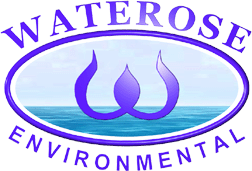 | ||||||
| Articles | Projects | Resume | Cartoons | Windsurfing | Paintings | Album |
Sustainable Development Series: Policy and Legislation
The Value of Laws in
Managing Chemicals in the Environment

by Waterose
The Honourable Austin Pelton
Minister of Environment
British Columbia
Address to the International Conference on
Avoiding and Managing Environmental Damage
from Major Industrial Accidents
November 1985.
Imagine a lawless environment. Chaos or bliss? The Pelton quote catapults onesí imagination into a utopian society where a good environment is achieved by knowledge alone. A lawless environment would be possible without humans; however, human knowledge creates an environment that must have laws and regulations to prevent social and environmental chaos.
The Constitution Act (CA) is the fundamental legislation in Canada that provides the framework upon which the federal and provincial legislation is founded. It includes the Canadian Charter of Rights and Freedoms (CCRF) which creates a safe and ordered social environment in which people live and conduct business in a free economic society.
The advancement of human knowledge in industrial processes to increase economic gains introduces chemical substances into the environment despite the knowledge that environmental degradation ensues as a direct result. Consequently, statutory instruments are essential to control the management of chemicals in the environment.
It is important to protect the environment because it sustains human existence, both in an economic and social sense. The environment provides natural resources that are used for economic prosperity such as forestry in British Columbia (BC). The environment provides essential resources that are used by people such as food and water. The environment can naturally absorb and transform a finite concentration of chemicals. When this concentration exceeds the point of equilibrium, the chemical becomes a pollutant and causes environmental degradation.
Despite that face that this knowledge exists "with communities, professionals, technicians, politicians, and the public" environmental degradation would continue and escalate if statutory instruments did not exist. The laws control, not only which chemicals and what concentrations are permissible, but also control whom is liable to correct and mitigate pollution effects.
The two most applicable federal statutes are the Canadian Environmental Protection Act (CEPA) of 1988 (Thompson, 1993) and the Transport of Dangerous Goods Act (TDGA) of 1985 (Boydell, 1998). The CEPA is designed to protect the environment and human life and health. The TDGA is designed to control the movement of dangerous materials. The primary provincial statute in BC is the Waste Management Act (WMA) and itsí associated regulations (Boydell, 1998). The WMA is designed to implement procedures to manage special wastes. Collectively these statutes regulate management of chemicals in the environment.
There are three phases to managing chemicals in the environment; controlling the nature of the substance, the transport of the substance, and the disposition of the substance. Each phase is regulated to minimise risk to the environment and to humans; herein is the value of laws in managing chemicals in the environment. The nature or chemical composition of the substance must be controlled because certain substances create significant risk to the environment and to human health, such as toxic pesticides. The movement of chemicals must be controlled because the accidental release of dangerous chemicals can cause significant environmental damage and loss of human life, such as a ruptured tank of chlorine. The disposition of chemicals must be regulated because certain special wastes are both persistent and mobile in the environment, such as polychlorinated biphenols used in the manufacture of electric transformers, which can leach into the environment and cause significant harm. These three phases of chemical management are regulated by statutory instruments that were designed because of the increasing knowledge of the hazards and risks that chemicals in the environment create.
The management of chemicals in the environment is not adequate protection to control environmental degradation in an economic society. In addition, there are costs associated with the risk management of chemicals, both short term and long term costs. As knowledge increases about the risks, so does the definition of whom is liable for the costs in the existing statutes. The implementation of the reverse-onus principle was introduced through jurisprudence of environmental case law in 1978 which introduced the concept that due care and diligence must be proven by the polluter (Cotton, 1993). Since then, new and revised statutes clearly define whom is liable and under what circumstances liability applies. This is most notable in the BC Contaminated Sites Regulations (CSR) implemented in 1997 under the authority of the WMAA (CSR Internet, 1998). The CRS is designed to shift the liability to remediate contaminated sites to the polluter; however, ultimately it is the public who pays. This is through decreased economic gains and inheritance of polluted lands in spite of increased knowledge about risks associated with chemicals in the environment.
The Pelton quote implies that laws are not necessary to manage chemicals in the environment and that knowledge is the human motivator. Well, I refute this premise and propose to you that economic gain is the human motivator, regardless of the cost to the environment. It is only through the design and enforcement of knowledgeable laws that we can manage chemicals in our environment and best achieve the utopian environment that Pelton espouses.
References:
February 10, 1998. Special Waste Regulations.
February 20, 1998. Transport of Dangerous Goods.
ES313 Environmental Regulation Course. Royal Roads University. Victoria, B.C.
Cotton, R. and McKinnon, K. 1993. An Overview of Environmental Law in Canada. in Environmental Law and Business in Canada. Ed. by Thompson, G. Canadian Law Books. Aurora, Ontario. pp. 3-30.
CSR. Contaminated Sites Regulations. 1998. Internet. Available at: URL: http://www.qp.gov.bc.ca/stat_reg/regs/elp/r375_96.htm
Thompson,G. 1993. The Impact of Environmental Law on the Lending Industry in Canada.in Environmental Law and Business in Canada. Ed. by Thompson, G. Canadian Law Books. Aurora, Ontario. pp. 409-453.
Royal Roads' Tony Boydell lectures on Environmental Legislation

Return to Index of Environmental Articles

 email Waterose
email Waterose
Please Sign My Guestbook
Please View My Guestbook

| Articles | Projects | Resume | Cartoons | Windsurfing | Paintings | Album |
 | ||||||